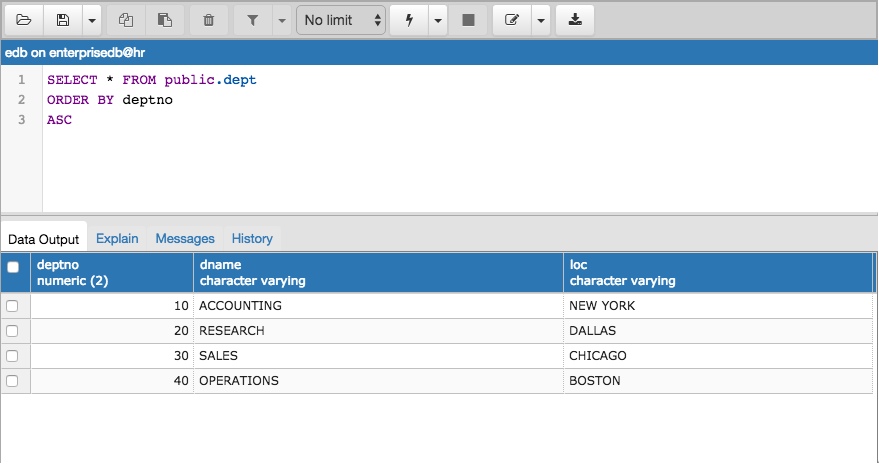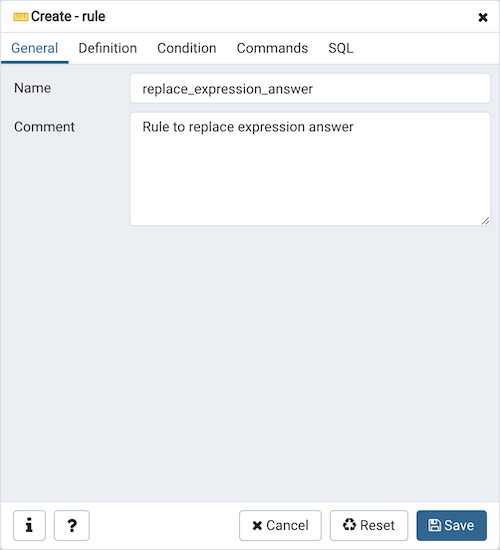

UPGRADE PGADMIN 4 INSTALL
Then use the pip tool to install pgadmin4 as shown. Once the virtual environment is in place, activate it as shown. Here, pgadmin4env is the name of the virtual environment.

Then create the virtual environment as shown.

Next, create a directory where you will create a virtual environment. $ sudo apt install python3-virtualenv python3-dev libpq-devĨ. Next, install the Python virtual environment and associated dependencies. $ sudo apt install libgmp3-dev build-essential libssl-devħ. So first, we will install the prerequisite packages as shown.

The only viable option is to install pgAdmin4 from a virtual environment. The same cannot support Linux Mint 20 and Pgadmi4 developers are yet to include support that allows users to easily install the frontend management tool using the APT package manager.Ħ. PgAdmin4 is available for Ubuntu 16.04 and later versions and can easily be installed using the APT package manager. $ sudo pg_isreadyĬheck PostgreSQL Accepting Incoming Connections Step 2: Install pgAdmin4 on Linux Mint Additionally, you can check if the database server is accepting incoming connections as shown. The Postgres user comes included by default with the installation of PostgreSQL. To log in to your PostgreSQL instance, first switch to the postgres user. You can confirm this using the command given below: $ sudo systemctl status postgresqlĤ. Usually, PostgreSQL starts automatically on boot up. $ sudo apt install postgresql postgresql-contribģ. To do this, we are going to install the postgresql package and postgresql-contrib which offers extended features that extend the functionality of PostgreSQL. done Attaching to docker-composeymlforpgadminpostgresql_demo-pgadmin4_1, docker-composeymlforpgadminpostgresql_demo-container-db_1ĭemo-pgadmin4_1 | sudo: setrlimit(RLIMIT_CORE): Operation not permittedĭemo-container-db_1 | PostgreSQL Database directory appears to contain a database Skipping initializationĭemo-container-db_1 | 09:50:50.254 UTC LOG: starting PostgreSQL 12.3 (Debian 12.3-1.pgdg100+1) on x86_64-pc-linux-gnu, compiled by gcc (Debian 8.3.0-6) 8.3.0, 64-bitĭemo-container-db_1 | 09:50:50.255 UTC LOG: listening on IPv4 address "0.0.0.0", port 5432ĭemo-container-db_1 | 09:50:50.255 UTC LOG: listening on IPv6 address "::", port 5432ĭemo-container-db_1 | 09:50:50.264 UTC LOG: listening on Unix socket "/var/run/postgresql/.s.PGSQL.5432"ĭemo-container-db_1 | 09:50:50.299 UTC LOG: database system was interrupted last known up at 07:51:19 UTCĭemo-container-db_1 | 09:50:50.677 UTC LOG: database system was not properly shut down automatic recovery in progressĭemo-container-db_1 | 09:50:50.682 UTC LOG: redo starts at 0/165FDE0ĭemo-container-db_1 | 09:50:50.683 UTC LOG: invalid record length at 0/165FEC8: wanted 24, got 0ĭemo-container-db_1 | 09:50:50.683 UTC LOG: redo done at 0/165FE90ĭemo-container-db_1 | 09:50:50.712 UTC LOG: database system is ready to accept connectionsĭemo-pgadmin4_1 | Starting gunicorn 19.9.0ĭemo-pgadmin4_1 | Listening at: (1)ĭemo-pgadmin4_1 | Using worker: threadsĭemo-pgadmin4_1 | /usr/local/lib/python3.8/os.py:1023: RuntimeWarning: line buffering (buffering=1) isn't supported in binary mode, the default buffer size will be usedĭemo-pgadmin4_1 | return io.Since pgAdmin4 provides a frontend interface for the management of PostgreSQL database objects, it’s essential to have PostgreSQL installed first.Ģ. done Starting docker-composeymlforpgadminpostgresql_demo-container-db_1. Starting docker-composeymlforpgadminpostgresql_demo-pgadmin4_1. C:\Users\karldev\Desktop\dev\blogs\docker\docker-compose.yml for pgadmin+postgresql>docker-compose up


 0 kommentar(er)
0 kommentar(er)
